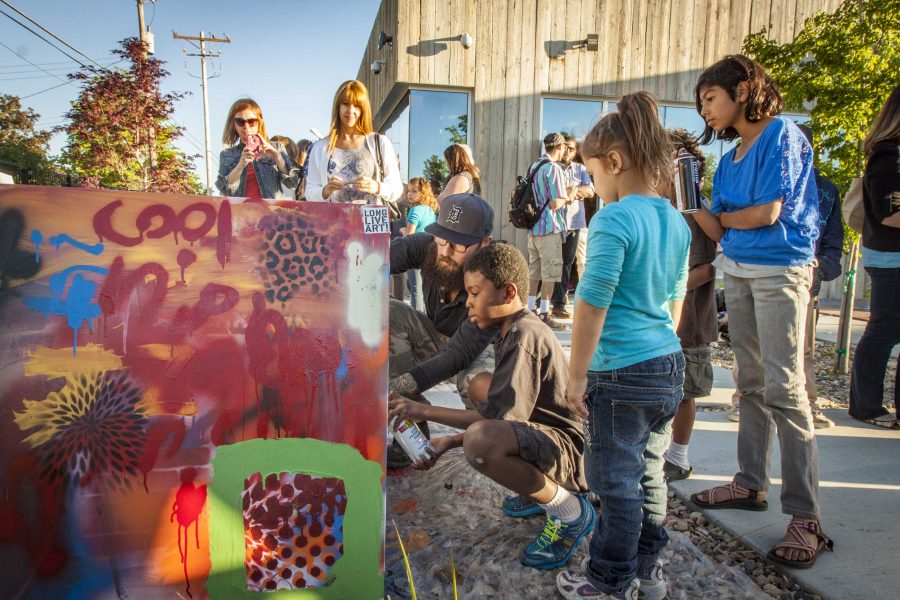The Utah Museum of Fine Arts here at the University of Utah recently received a prestigious grant from the National Endowment for the Arts. The $35,000 grant was awarded to the museum to support and continue the growth of their “Art, Community, Museum, Education” program. While this is the largest NEA grant the museum has ever received, there is much more to the accomplishment than that.
The NEA is an independent organization which supports, funds and strengthens arts learning. More specifically, the program is known for celebrating diversity and providing equal access to arts communities across America. The category in which UMFA placed — “Art Works” — is the NEA’s largest grant program. This year, they awarded 977 grants in 13 different artistic fields from education to visual art. The UMFA is also the only museum in Utah to receive a grant in 2019. They were awarded alongside several other remarkable locations and programs, such as Mauro Inc. in Puerto Rico, which supports children affected by Hurricane Maria through therapeutic arts programs, and Design Museum Boston’s “Bespoke Bodies” program, which will showcase a 500-year history of prosthetics and their designs.
What is the ACME program?
The UMFA’s “Art, Community, Museum, Education” program has similar philanthropic pursuits in our local community. In January of 2016, the UMFA shut down for over a year and a half to remodel. During this time, director Gretchen Dietrich encouraged changes to the museum beyond the physical remodeling. This is when ACME was born. Under the guidance of Director of Education and Engagement Jorge Rojas, the staff created a dynamic program aimed at better engaging with the community through arts beyond the museum itself. Starting with a partnership with the Salt Lake City Public Library, Rojas said, “Our strategy was to identify Salt Lake City’s most creative, inventive and cross-disciplinary minds to explore relevant topics and issues within society, and to use our institutional platform to elevate their voices, research and activism.” Now the program has over 40 local partners that host ACME sessions, including the Glendale and Marmalade branches of the Salt Lake City Public Library.
The ACME program consists of three different components which work together to bring artistic innovation to everyone in the community:
ACME LAB: Located in the museum itself, this interactive space poses as a community collaboration hub where artists can explore innovative exhibition strategies and build a network.
ACME Scholars: A mentorship program which engages our very own undergraduate students in the Honors College in art and social justice related activities on campus as well as in the community.
ACME Sessions: A bimonthly meet-up program held at the branches of the Salt Lake City Public Library where leaders and community members alike work together to explore new techniques of education and engagement through activities like presentations and dialogue.
In the three years the program has been running, the results of spreading arts education and awareness throughout the community have been fruitful. “One of the accomplishments we’re most proud is seeing the ACME Initiative begin to transform how the UMFA connects with, engages and learns from the community,” Rojas said. “We’re doing this through co-created programs, projects and exhibitions with artists, community leaders and local partners. Each contributor, from teachers to organizations, bring different voices, expertise and cultural knowledge to the table,” Rojas said. Not only does the NEA grant validate all the hard work the program has done so far, but it gives them support to continue to expand.
What’s Next for ACME?
The program’s goals are geared towards reaching a broader audience in Utah and to become a better resource for arts in the community. With the findings they’ve collected over the past three years, the UMFA plans to further integrate learning facets into the community with this grant. “We’re committed to this work for the long haul, so this grant will help us to keep experimenting and evolving the program through new exhibitions, support for artists, educators and other community leaders as well as research and evaluation,” Rojas said. “This money will help us continue to co-create programming and community-shared events.”
As the program continues to grow under this grant, optimism and dedication are bound to spread just like the arts. Programs such as ACME help everyone in the community access tools that otherwise would be confined to our college campus. As Mary Anne Carter, the chairman of the National Endowment for the Arts puts it, “These awards reach every corner of the United States. [They] are a testament to the artistic richness and diversity in our country. Organizations such as the Utah Museum of Fine Arts are giving people in their community the opportunity to learn, create and be inspired.”


